Physical Address
304 North Cardinal St.
Dorchester Center, MA 02124
The understanding of hip pathology has substantially improved recently because of more specific clinical tests, better imaging diagnosis, and discovery of new entities. Hip pathologies include femoroacetabular impingement (FAI), borderline dysplasia, femoral anteversion, hip instability, and femoral head deformities such as slipped capital femoral epiphysis (SCFE) and Perthes disease. Understanding of the hip anatomy, physiology, biomechanics, different pathologies, and treatment options is key to offering high-quality care to patients.
This chapter will discuss hip and pelvis anatomy; various hip pathologies; and treatment options that the orthopedic surgeon, physical therapist, or athletic trainer will encounter through their regular practice.
The acetabular fossa constitutes the inferior portion of the acetabulum and is surrounded by the lunate surface in its superior and lateral aspects ( Fig. 54.1 ).
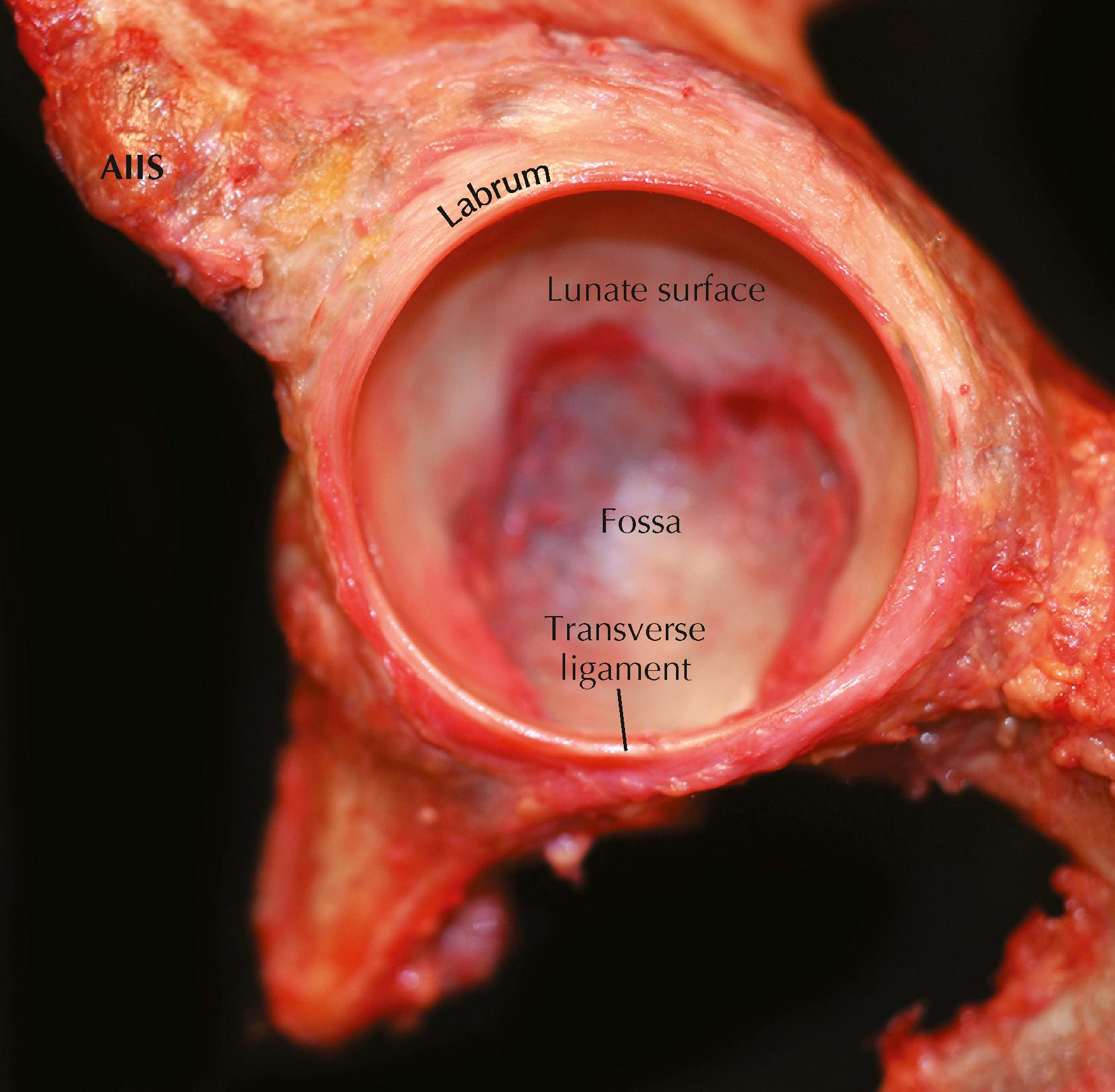
When performing a hip arthroscopy, it is critical to understand the location of the pathology. To more easily locate chondrolabral hip lesions, the socket is considered a clock in which 12 o’clock represents the most superior aspect of the acetabulum and continuing anteriorly with successive hours. Unlike the knee, the 3 o’clock position is always anterior for both right and left hips.
Different bony landmarks have been described to help the surgeon with an accurate location during arthroscopy:
The superior extent of the anterior labral sulcus (psoas-u) indicates the 3 o’clock position on the acetabular rim. It corresponds to the location of the iliopsoas tendon anteriorly.
The stellate crease is located superior to the apex of the acetabular fossa and corresponds to the 12:30 position ( Fig. 54.2 ).
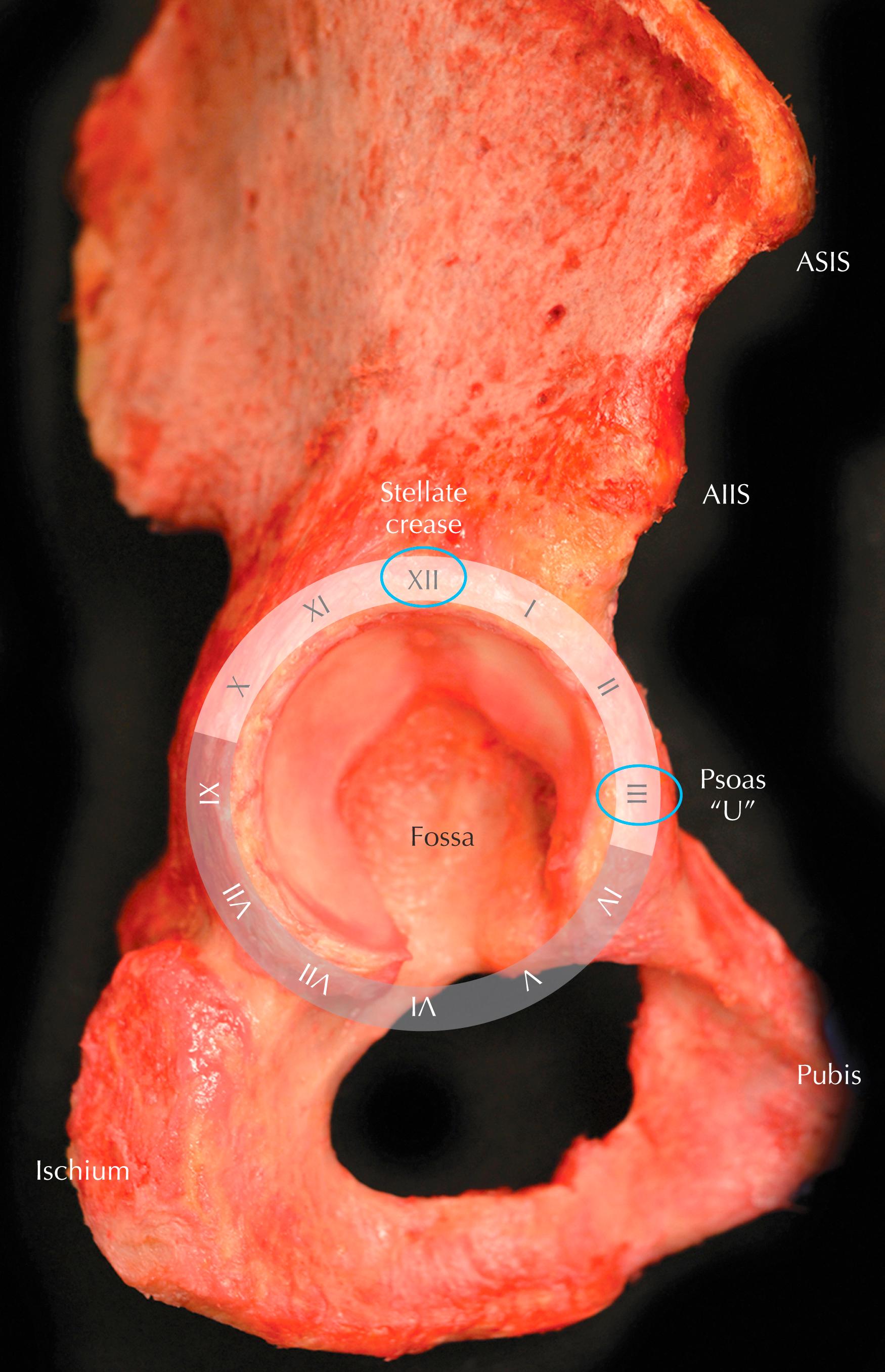
The abduction angle of the acetabulum relative to the horizontal plane averages 45 degrees with 20 degrees of anteversion.
The femoral head forms roughly two-thirds of a sphere whose surface is completely articular except for the fovea capitis femoris, where the ligamentum teres is attached ( Figs. 54.3 and 54.4 ).
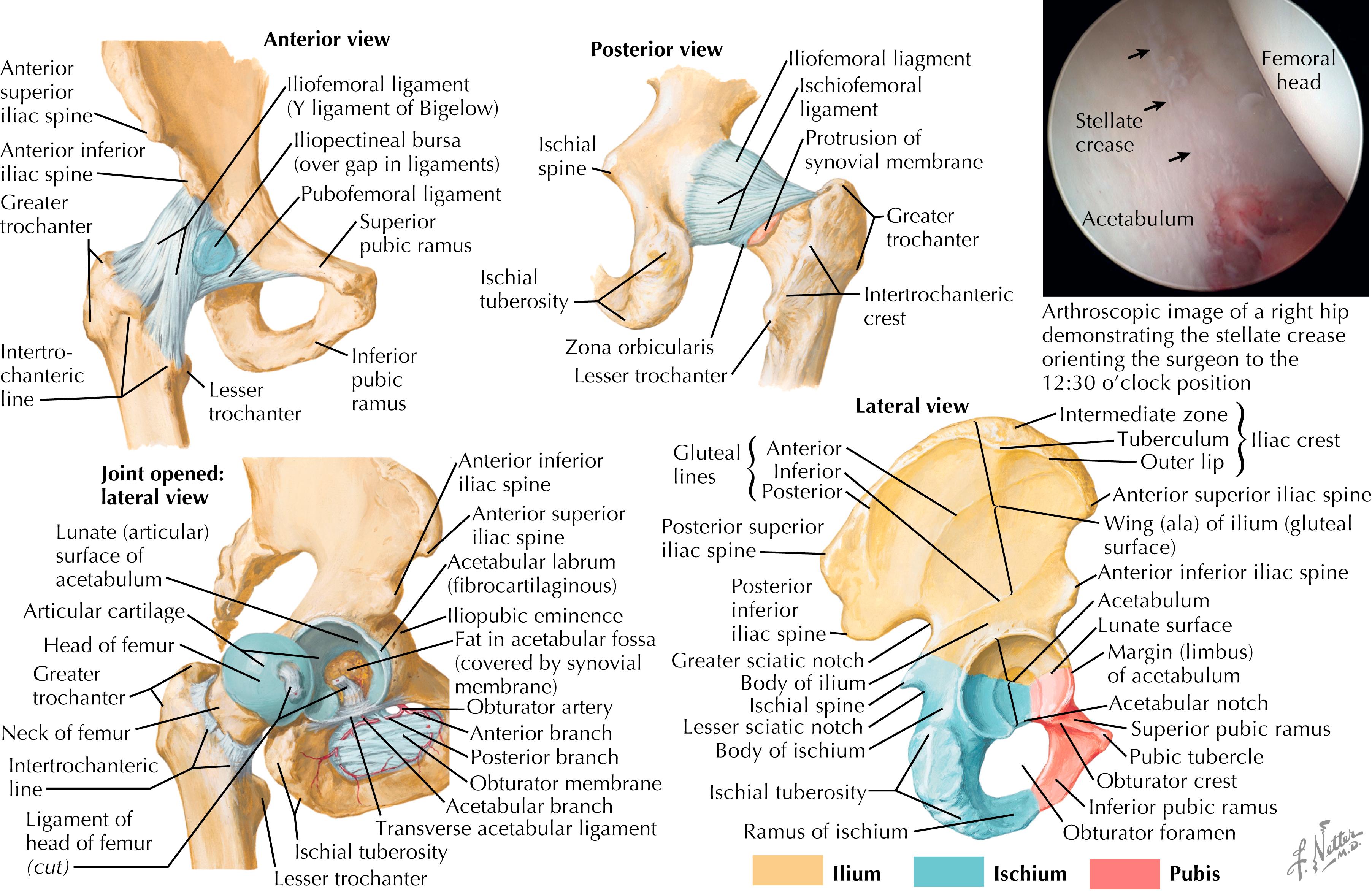
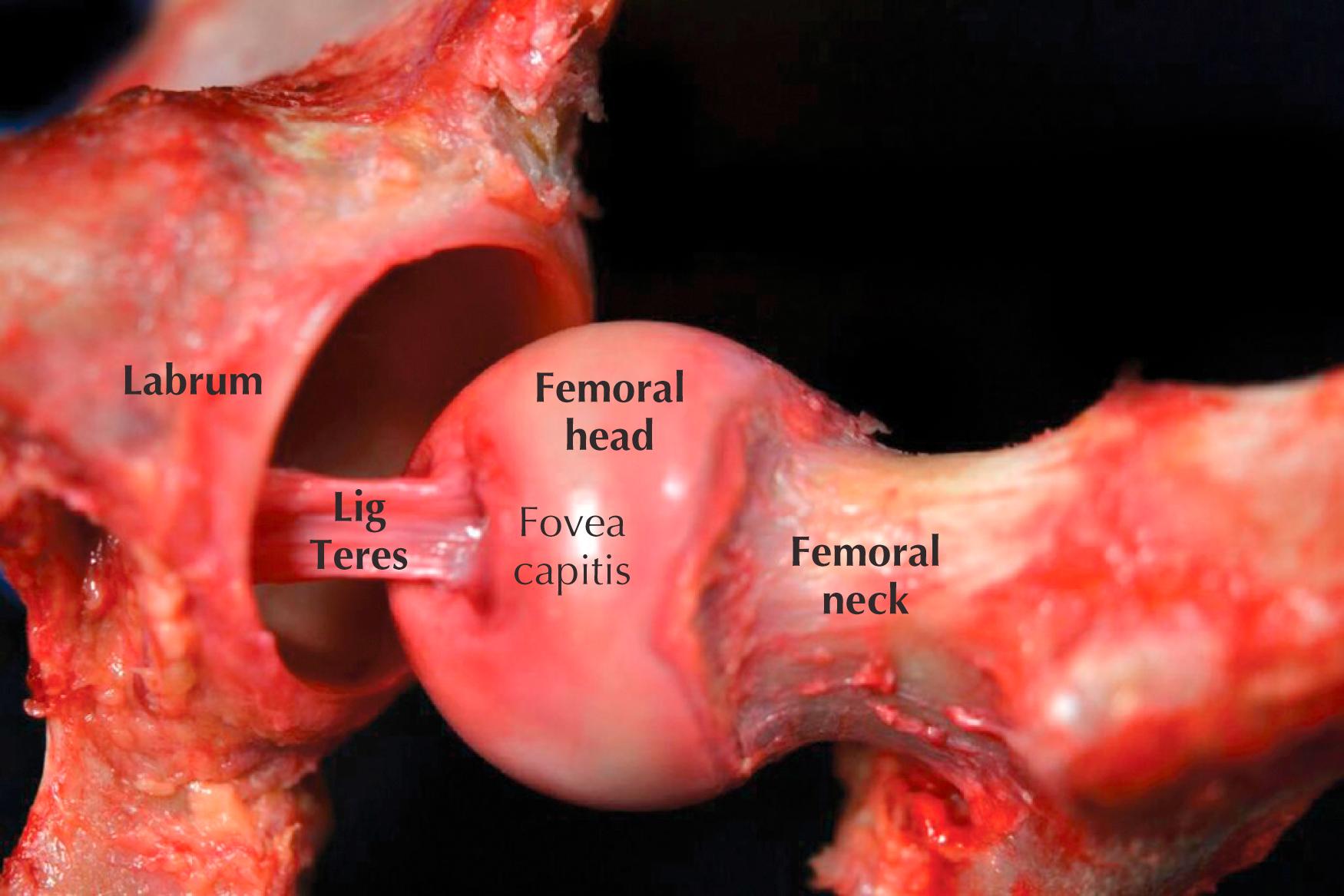
The neck-shaft angle averages 130 degrees, and the femoral neck is anteverted 14 degrees on average relative to the bicondylar axis at the knee.
The labrum is a fibrocartilaginous structure attached to the acetabular rim.
It is responsible for guaranteeing the suction seal, a key function in fluid dynamics, ensuring wider coverage of the femoral head and providing negative intra-articular pressure that provides stability to the hip joint.
Labral pathology is normally observed in the anterosuperior area of the socket (12 to 2 o’clock position). This area correlates to the location where impingement normally occurs.
The hip capsule is formed by the iliofemoral ligament anteriorly, the ischiofemoral ligament posteriorly, and the pubofemoral ligament inferiorly ( Fig. 54.5 ).
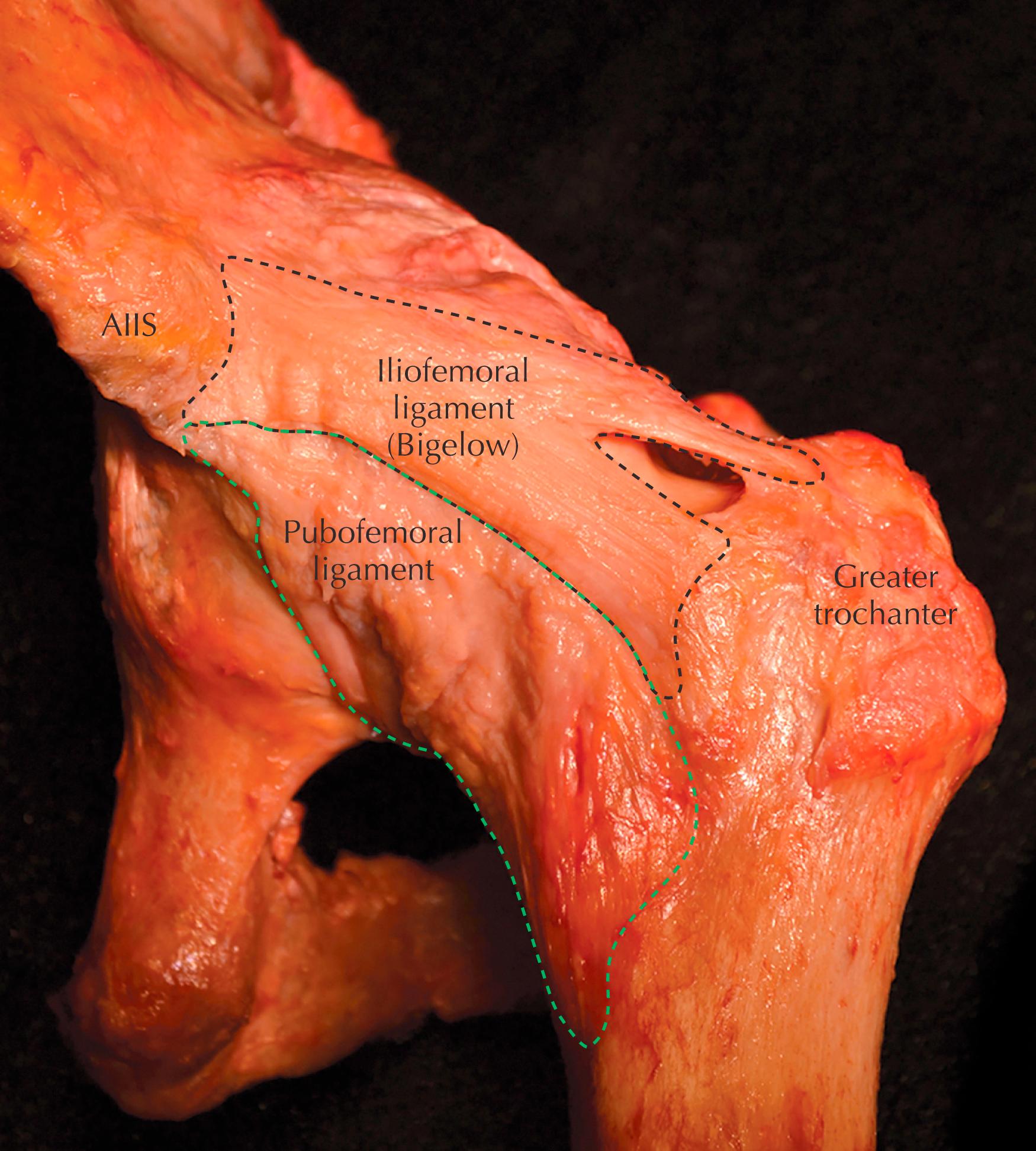
Near the acetabular origin, the superior and superolateral aspect of the capsule is the thickest portion (3.7–4.0 mm).
The capsule is inserted at a mean of 26.2 mm distal to the chondral head–neck junction of the proximal femur. The capsule has a spiral configuration that tightens in terminal extension and external rotation.
Gluteal group: The gluteal muscles include the gluteus maximus, gluteus medius, gluteus minimus, and tensor fasciae latae.
The gluteus medius muscle stabilizes the hip and controls hip motion, particularly in weight-bearing. Weakness or insufficiency of this muscle leads to a Trendelenburg gait.
Become a Clinical Tree membership for Full access and enjoy Unlimited articles
If you are a member. Log in here